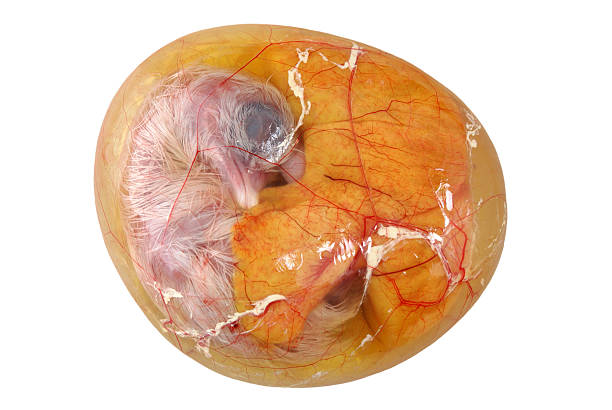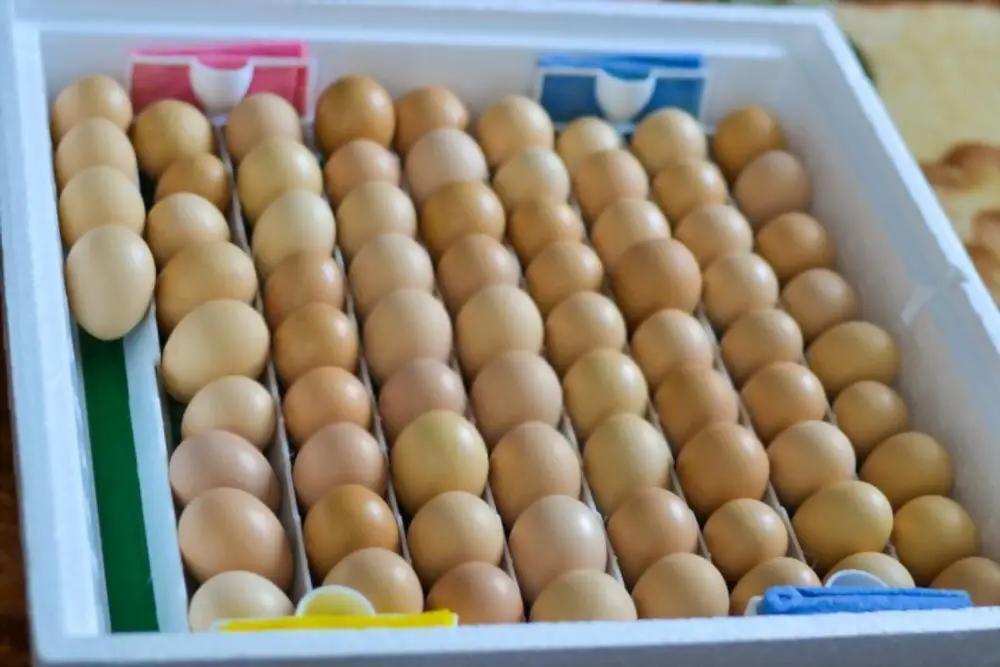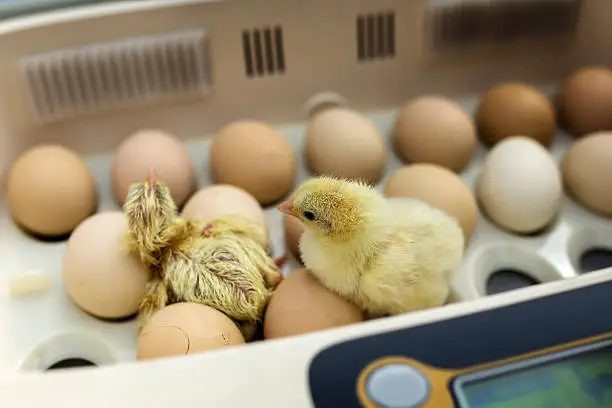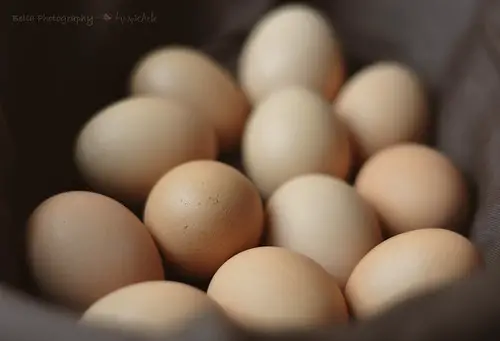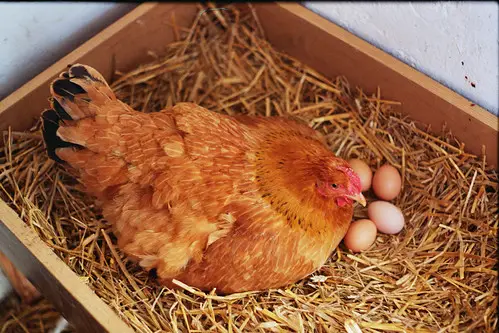Table of Contents
Embryonic development in a chicken egg during incubation occurs in specific stages and not at specified times. For the sake of convenience and simplicity, embryonic development is usually measured in hours or days. The images below show the typical day-by-day growth rate for a chicken egg and chicken embryo development during incubation.
Day 1

On day 1, the yolk sac starts to develop. In addition, the blastoderm develops to the size of a quarter and contains the start of the chick’s head (with brain and eyes), spine and blood vessels including the nervous and digestive systems.
Day 2

The amnion and chorion begin to develop; faint blood vessels (the vitelline vessels) appear on the surface of the yolk, along with the start of the heart and ear; by the end of the day, the heart (the spot in the center) begins to beat.
Day 3

The embryo, looking like a question mark, begins to take shape as the lungs, nose, legs, wings, tail, and allantois form and the amnion grows to surround the embryo; blood vessels become visible.
Day 4

The embryo separates from the yolk sac, rises on the yolk, turns onto its left side, and begins to curve at the tail; the tongue begins to develop; the eye starts taking on color.
Day 5

Reproductive organs, gender differentiation, leg bones, crop, and circulatory system begin to develop; chorion and allantois begin fusing; the start of a beak appears; the eye is now clearly visible.
Day 6

The three main segments of the legs and wings become distinct, the wings bend at the elbow, and the legs bend at the knee; the chorioallantois develops at the blunt end of the egg; the embryo is now capable of voluntary movement.
Day 7

Feathers begin to form on the tail and thigh; the toes lengthen and separate, with thin webs between them; the comb begins to grow; the egg tooth starts developing; the chorioallantois attaches to the inner shell membrane.
Day 8

The neck and beak lengthen considerably; the upper and lower beaks are of equal length; feather tracts begin to appear; the nictitating membrane (third eyelid) begins to develop; the skeletal bones start hardening.
Day 9

The beak continues to lengthen and a mouth opening develops; the upper eyelids begin covering the eyes; knee caps begin to form; the chorioallantois nears completion.
Day 10

The toes start developing claws; flight feathers become prominent; the lower eyelid grows upward and the eyelids become more elliptical than round; the nostril narrows to a slit; the beak begins to harden.
Day 11

The toes curve and the legs develop scales; serrations appear on the comb; intestinal loops begin protruding into the yolk sac; the aorta (main blood vessel) is visible along the neck; the embryo becomes extremely active.
Day 12

The toes begin to harden; the lower eyelid covers about two-thirds of the eye; most of the body is covered with the beginnings of feathers; the fusion of the chorioallantois is complete and the membrane surrounds the embryo.
Day 13

The leg scales begin to overlap; down becomes visible; the eyelids come together to form a crescent; the skeleton is nearly completely formed; the embryo produces increasing heat and uses increasing oxygen.
Day 14

The skull starts hardening; the head turns toward the blunt end of the egg; the growing embryo is fully formed; now as long as the egg is wide and getting crowded inside the shell, the embryo becomes less active.
Day 15

The outer covering of the beak has peeled away, making the beak appear shorter and blunter; the embryo fills the shell except for part of the air cell.
Day 16

The beak, turned toward the air cell, sometimes presses against the cell membrane when the embryo rearranges its position; the intestinal loops (visible near the hock) start retracting into the body; the albumen is almost all absorbed.
Day 17

The embryo’s body is nearly covered with down; it begins assuming a hatching position–although the beak is typically beneath the right wing, other normal positions include beak over the wing, feet over the head, and head between the thighs.
Day 18

The blood volume and hemoglobin (red blood protein) decrease, causing the embryo to appear somewhat pale; the embryo positions its body longwise to the shell in preparation for hatching.
Day 19

The intestinal loop finishes retracting and the yolk sac begins to enter the body and become enclosed within the abdomen; the beak breaks into the air cell and the embryo takes its first real breath; the bird begins peeping.
Day 20

The yolk sac is half enclosed within the embryo’s body; the blood content of the chorioallantoic membrane decreases and the membrane becomes sticky; the embryo fills the shell except for part of the air cell.
Day 21

The neck begins to spasm and the embryo pips through the shell, then slowly rotates counterclockwise to break free; the shell here has been cut away to show the typical hatching position.

